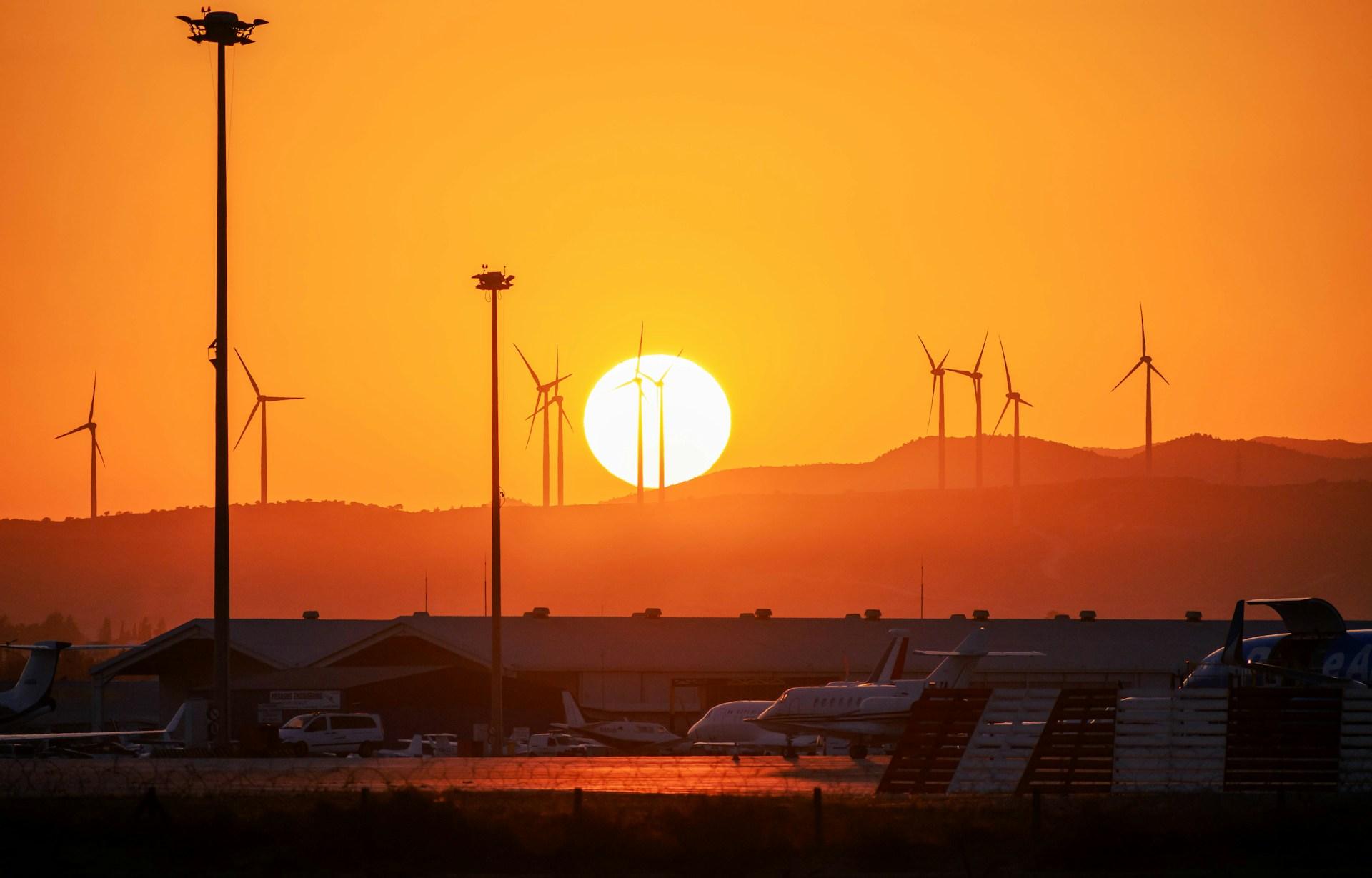Indonesia is making steady progress in adopting renewable energy sources, and one exciting development is the growing use of solar power at major airports across the country. This shift is part of the nation’s broader commitment to clean energy and reducing carbon emissions in the transportation sector.
Airports are high-energy facilities that operate around the clock, making them ideal candidates for solar power integration. Beyond reducing dependence on fossil fuels, the use of solar photovoltaic systems (PV or PLTS in Indonesian) helps cut operational costs and enhances the image of sustainability.
Here are five Indonesian airports that are leading the way in solar energy adoption.
1. Soekarno–Hatta International Airport Uses 1.5 MWp of Solar Power
As Indonesia’s busiest and largest airport, Soekarno–Hatta International Airport has made major strides toward energy sustainability. Two major solar energy installations are already in operation:
720 solar panels installed on the Airport Operation Control Center (AOCC) roof, generating a total of 241 kilowatt peak (kWp).
An even larger solar system at Terminal 2 with a capacity of 1.50 megawatt peak (MWp).
These solar systems significantly reduce the airport’s carbon footprint while serving as a model for other large infrastructure projects.
2. Kualanamu Airport in North Sumatra Installs 5,100 Square Meters of Rooftop Solar
Located in Deli Serdang, Kualanamu International Airport has also embraced renewable energy with the installation of rooftop solar panels across multiple facilities:
Solar panels have been installed on both the Cargo Terminal and Administration Building, covering a total area of 5,100 square meters.
The total capacity of this solar power system reaches 761 kWp.
This project is a strong signal that regional airports can also play a major role in Indonesia’s clean energy transition.
3. Bali’s Ngurah Rai Airport Becomes a Model of Energy Efficiency
Ngurah Rai International Airport in Bali is not only a key tourism hub but also a leading example of energy-efficient airport operations:
The airport operates 288 solar panels with a capacity of 155 kWp.
It won 1st Place at the 2022 Subroto Awards in the Large Building Energy Efficiency category.
It also represented Indonesia at the ASEAN Energy Efficiency and Conservation Best Practices Award.
This achievement highlights how the tourism sector can align with environmental goals and create a positive global image.
4. Ahmad Yani Airport in Semarang Earns Green Building Certification
Jenderal Ahmad Yani International Airport in Semarang was designed with sustainability in mind. Its solar installations are a key part of its green infrastructure:
The airport has 186 solar panels with a capacity of 100 kWp.
These are installed on the canopy of the Administration Building and the rooftop of the Main Power House (MPH).
It has received a Gold category Greenship Building certificate from the Green Building Council Indonesia (GBCI).
This certification confirms the airport’s commitment to sustainable design and operations.
5. Banyuwangi Airport Proves Small Airports Can Lead Too
Though smaller in scale, Banyuwangi Airport in East Java has set an inspiring example for green innovation at the local level:
The rooftop solar system spans 600 square meters, with a capacity of 35.1 kWp.
It is the first airport in Indonesia to receive the Greenship Net Zero Healthy Ready (NZH) certification from GBCI.
This achievement shows that even smaller airports can take meaningful steps toward environmental responsibility.
Why Solar Energy at Airports Matters
Integrating solar power at airports delivers multiple benefits across environmental, economic, and reputational dimensions.
Reduced Operational Costs
Airports consume large amounts of electricity. By generating their own solar power, they can reduce electricity bills and improve long-term energy efficiency.
Lower Carbon Emissions
Switching from fossil fuel-based electricity to solar energy helps reduce greenhouse gas emissions and contributes to Indonesia’s climate goals.
Enhanced Sustainability Image
Airports that implement solar energy gain recognition as environmentally responsible organizations, which boosts public trust and supports international cooperation on climate initiatives.
A Greener Future for Air Travel
The transformation of the aviation industry is essential in the global push for sustainability. Airports, as central nodes in transportation networks, have a big role to play in lowering carbon footprints.
Solar power adoption also aligns with Indonesia’s national targets for renewable energy development and achieving net-zero emissions by 2060.
Is Your Local Airport Using Renewable Energy Yet?
After reading about these inspiring developments, it's worth asking: Is your local airport already using solar energy or other forms of renewable power?
If not, there is an opportunity for communities, local governments, and civil society groups to advocate for greener airport policies and investments.
The movement toward clean energy isn't just a top-down initiative — it benefits from public awareness and support at the grassroots level.
Conclusion
The integration of solar energy at Indonesian airports marks a positive step toward a more sustainable future. From the massive Soekarno–Hatta Airport to the smaller yet innovative Banyuwangi Airport, each project demonstrates that renewable energy solutions are viable and impactful.
These achievements offer a strong message: clean energy is not only necessary, it is also possible across all scales of infrastructure.
As Indonesia continues to build toward a sustainable energy future, airports will remain a key part of that journey. Let’s support and celebrate every step taken toward a greener and cleaner Indonesia.
Sources:
Zonaebt.com, January 21, 2024
Republika.co.id, July 17, 2023
Tempo.co, December 27, 2023




